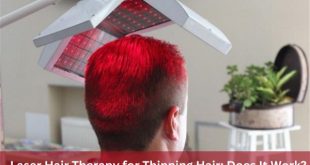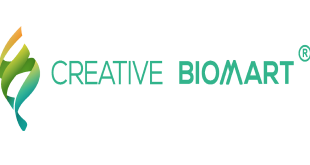Attention Deficit Hyperactivity Disorder (ADHD) is a neurodevelopmental condition that affects millions of children and adults worldwide. It is characterized by symptoms of inattention, hyperactivity, and impulsivity. Managing ADHD requires a multifaceted approach tailored to individual needs. This article explores comprehensive ADHD disorder treatment plans, encompassing medication, behavioral therapy, lifestyle modifications, and educational support.
Understanding ADHD Disorder
ADHD is often diagnosed in childhood but can persist into adulthood. The symptoms are generally categorized into three types: predominantly inattentive presentation, predominantly hyperactive-impulsive presentation, and combined presentation. Each type requires different treatment strategies to effectively manage the condition.
Symptoms of ADHD Disorder
- Inattention: Difficulty sustaining attention, following through on tasks, and organizing activities.
- Hyperactivity: Excessive fidgeting, inability to stay seated, and talking excessively.
- Impulsivity: Interrupting others, difficulty waiting for one’s turn, and making hasty decisions.
Medication Management
Medication is a cornerstone in the treatment of ADHD disorder, significantly improving symptoms in many patients. There are two main categories of ADHD medications: stimulants and non-stimulants.
Stimulant Medications
Stimulants are the most commonly prescribed medications for ADHD. They work by increasing levels of dopamine and norepinephrine in the brain, which help improve attention and focus while reducing hyperactive and impulsive behaviors.
- Methylphenidate (Ritalin, Concerta)
- Amphetamines (Adderall, Vyvanse)
Stimulants are typically effective within 30 minutes to an hour and can last 4 to 12 hours, depending on the formulation. They are generally safe but can have side effects such as decreased appetite, sleep problems, and increased heart rate.
Non-Stimulant Medications
Non-stimulant medications are an alternative for patients who do not respond well to stimulants or experience significant side effects.
- Atomoxetine (Strattera): A selective norepinephrine reuptake inhibitor (SNRI) that helps with attention and impulsivity.
- Guanfacine (Intuniv) and Clonidine (Kapvay): Alpha-2 adrenergic agonists also manage hyperactivity and impulsivity.
Behavioral Therapy
Behavioral therapy is a critical component of ADHD disorder treatment, particularly for children. It focuses on modifying negative behaviors and reinforcing positive ones through structured strategies and interventions.
Parent Training and Education
Parents play a vital role in managing their child’s ADHD symptoms. Training programs help parents develop skills to manage their child’s behavior, create effective routines, and establish a supportive home environment.
- Behavioral Parent Training (BPT): Involves positive reinforcement, time-out, and consistent discipline strategies.
- Parent-Child Interaction Therapy (PCIT): Enhances the parent-child relationship through real-time coaching sessions.
Cognitive Behavioral Therapy (CBT)
CBT helps individuals with ADHD develop skills to manage their symptoms and improve functioning. It focuses on changing negative thought patterns and behaviors.
- Organizational Skills Training: Assists in developing time management and organizational skills.
- Problem-Solving Training: Teaches strategies to handle challenges and make effective decisions.
Lifestyle Modifications
Lifestyle changes can significantly impact the management of ADHD disorder. Incorporating healthy habits and routines can improve overall well-being and symptom control.
Diet and Nutrition
A balanced diet is essential for brain health and can affect ADHD symptoms. Some studies suggest that specific dietary changes may benefit individuals with ADHD.
- Elimination Diets: Removing certain food additives, preservatives, and allergens.
- Supplementation: Omega-3 fatty acids, zinc, and iron have shown potential benefits in managing ADHD symptoms.
Physical Activity
Regular physical activity is beneficial for individuals with ADHD, helping to reduce hyperactivity and improve concentration and mood.
- Aerobic Exercises: Running, swimming, and cycling can increase dopamine levels and enhance focus.
- Mind-Body Practices: Yoga and mindfulness meditation can help reduce stress and improve self-regulation.
Educational Support
Children with ADHD often face challenges in academic settings. Educational support is crucial to help them succeed and manage their symptoms effectively.
Individualized Education Programs (IEPs)
IEPs are tailored educational plans designed to meet the specific needs of students with ADHD. They outline accommodations and modifications to support learning.
- Extended Time on Tests: Helps manage attention and impulsivity during exams.
- Preferential Seating: Reduces distractions and enhances focus.
Classroom Strategies
Teachers can implement various strategies to support students with ADHD in the classroom.
- Structured Routines: Clear and consistent routines help students know what to expect and reduce anxiety.
- Breaks and Movement Opportunities: Allowing short breaks and incorporating physical activity can help manage hyperactivity.
Integrative Approaches
Combining multiple treatment modalities often yields the best results in managing ADHD disorder. A comprehensive approach addresses the diverse needs of individuals and provides holistic care.
Collaborative Care
A team-based approach involving healthcare providers, educators, and family members ensures cohesive management of ADHD symptoms.
- Regular Monitoring: Ongoing treatment efficacy assessment and strategies adjustment as needed.
- Communication: Open communication among all stakeholders ensures consistency and support.
Symptoms and Diagnosis
ADHD symptoms are categorized into two main types: inattention and hyperactivity-impulsivity. Inattention symptoms include difficulty sustaining attention, frequent careless mistakes, not listening when spoken to, difficulty organizing tasks, and forgetfulness in daily activities. Hyperactivity-impulsivity symptoms encompass excessive fidgeting, inability to stay seated, running or climbing in inappropriate situations, difficulty playing quietly, talking excessively, and interrupting others.
Diagnosis involves a comprehensive evaluation, including clinical interviews, behavior rating scales, and observations. According to the Diagnostic and Statistical Manual of Mental Disorders (DSM-5), symptoms must be present for at least six months, occur in two or more settings (e.g., home and school), and cause significant impairment in social, academic, or occupational functioning. The onset of symptoms typically occurs before age 12.
Causes and Risk Factors
The exact cause of ADHD remains unknown, but research suggests a multifactorial etiology involving genetic, environmental, and neurological factors. Family studies indicate a strong genetic component, with heritability estimates around 70-80%. Environmental risk factors include prenatal exposure to alcohol and tobacco, low birth weight, premature birth, and exposure to lead. Neuroimaging studies have identified structural and functional differences in brain regions associated with attention, executive function, and motor activity, particularly the prefrontal cortex, basal ganglia, and cerebellum.
Management and Treatment
ADHD management is multimodal, often involving behavioral interventions, educational support, and medication. Behavioral interventions include parent training programs, classroom management strategies, and cognitive-behavioral therapy (CBT) to improve organizational skills and self-control. Educational support might involve individualized education plans (IEPs) or 504 plans to provide accommodations such as extended test time or a quiet testing environment.
Medication is a cornerstone of ADHD treatment, with stimulants like methylphenidate and amphetamines being the most commonly prescribed. These medications increase dopamine and norepinephrine levels in the brain, enhancing attention and reducing hyperactivity and impulsivity. Non-stimulant medications, such as atomoxetine and guanfacine, are alternatives for those who do not respond to or cannot tolerate stimulants.
Living with ADHD
Living with ADHD presents challenges but also opportunities for creativity, energy, and innovation. With proper diagnosis, treatment, and support, individuals with ADHD can lead successful and fulfilling lives. Raising awareness, reducing stigma, and promoting research are essential for improving outcomes and quality of life for those affected by ADHD.
Conclusion
Comprehensive ADHD disorder treatment plans require a personalized approach that incorporates medication, behavioral therapy, lifestyle modifications, and educational support. By addressing the multifaceted nature of ADHD, these plans can significantly improve the quality of life for individuals affected by this disorder. Collaboration among healthcare providers, educators, and families is essential to achieve optimal outcomes and help individuals with ADHD thrive in various aspects of their lives.







